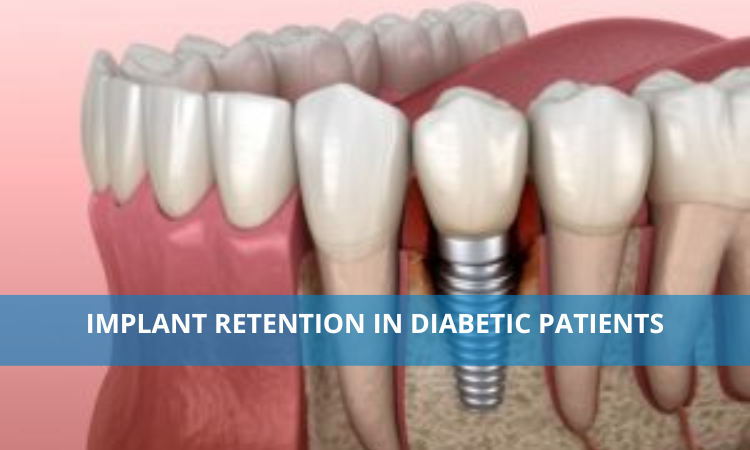
Implant surgeries are one of the most widely acclaimed and successful oral surgeries. With a mean survival rate of 94.6 % and a mean success rate of 89.7 % after more than 10 years - implant surgeries are highly predictable surgical procedures.
However, certain systemic factors result can result in a poor prognosis. Hence, making them not an ideal choice in certain conditions.
Diabetes mellitus is a chronic condition often considered a contraindication in implant surgeries. Furthermore, diabetic patients are more prone to periodontitis, poor wound healing and poor response to infections. These instances can further delay or disrupt the healing process in implant surgeries.
However, the paradigm is shifting with new research. Many studies have offered patients benefits from oral rehabilitation procedures. The lack of adequate food intake in cases of tooth loss can not make for the adequate metabolic needs required to maintain glucose levels. Meanwhile, if the patient can maintain their dietary intake with improved nutrition - the glycemic index can be controlled.
The major step in planning the treatment outcomes is to recognise conditions that can put the patient at higher risk of complications. The surgeons can then make informed decisions and refine the treatment plan accordingly.
Effects Of Diabetes On Osteointegration
Osteointegration is the process which results in the formation of a direct structural and functional connection between the living bone and an implant. Initially, the term was restricted to the association of implant and bone. However, with recent advancing techniques, the term also describes the attachment of other materials used for dental and orthopaedic applications as well.
Achieving good osteointegration is key to a well-established dental implant in diabetic patients. In patients suffering from higher glycemic activity, the altered parathyroid activity leads to altered Ca and P metabolism. This can result in decreased collagen formation, increased osteoclastic activity and a persistent inflammatory response. The poorly formed bone matrix can further diminish growth and extracellular matrix accumulation. This can consequently lead to the poor bone formation during wound healing.
Types Of Diabetes & Osteointegration
Type -1 diabetes is responsible for decreased bone mineral density, as well as reduced bone formation and higher bone resorption. Meanwhile, Type -2 diabetes produces normal or greater bone mineral density in some patients. According to different observations, insulin not only reduces the deleterious effect of hyperglycemia by controlling it but also stimulates osteoblastic activity.
Implant Prognosis In Diabetic Patients
Multiple researchers have observed a high percentage of early implant failure as compared to late-onset failure. The mean data published in retrospective studies suggest that the success rate of implants in diabetic patients is in the range of 85.5-100% as compared to nondiabetic patients. The studies have also reported that implant success in controlled diabetic patients is as high as compared to normal healthy individuals.
Good glycemic control as well as preoperative and postoperative measures are required to achieve improved osseointegration in diabetics. External factors such as implant surface characteristics, higher implant length and width have also shown success rates in diabetic patients.
Conclusion
Clinical studies with a greater number of cases and controls are still required to develop a better understanding of the impact of diabetes on dental implant success.

Dr Rida Qamar
The author is contributing writer at Dental News Pakistan and can be reached at Ridaqamar100@gmail.com

